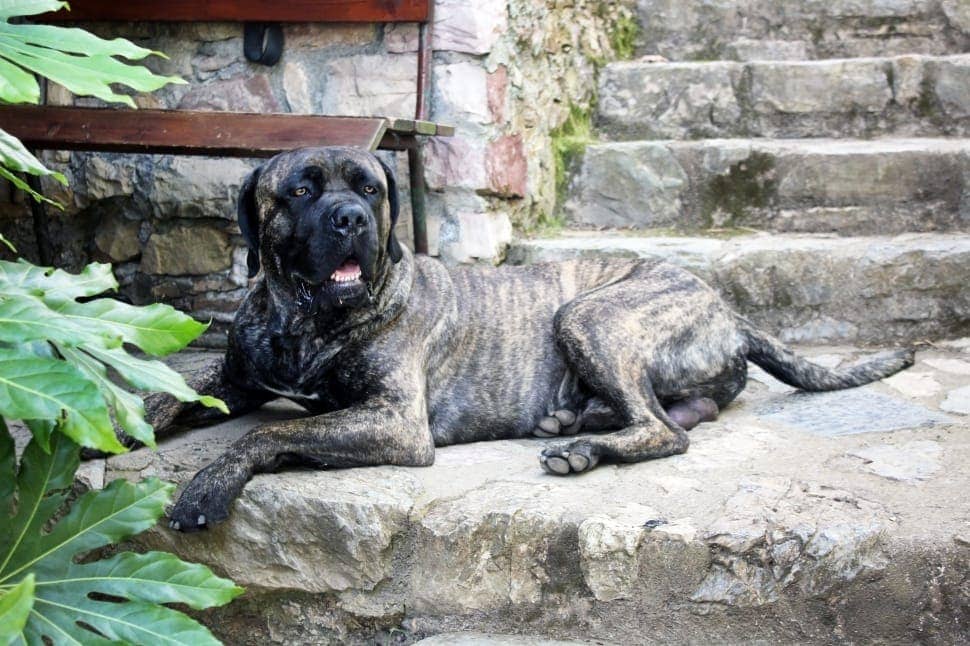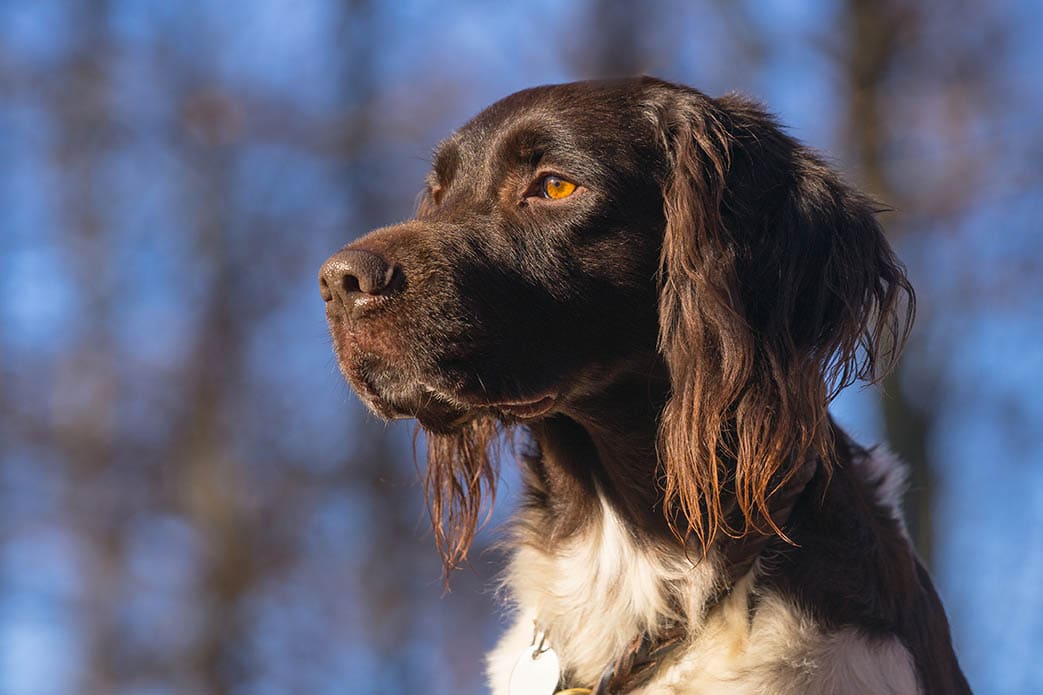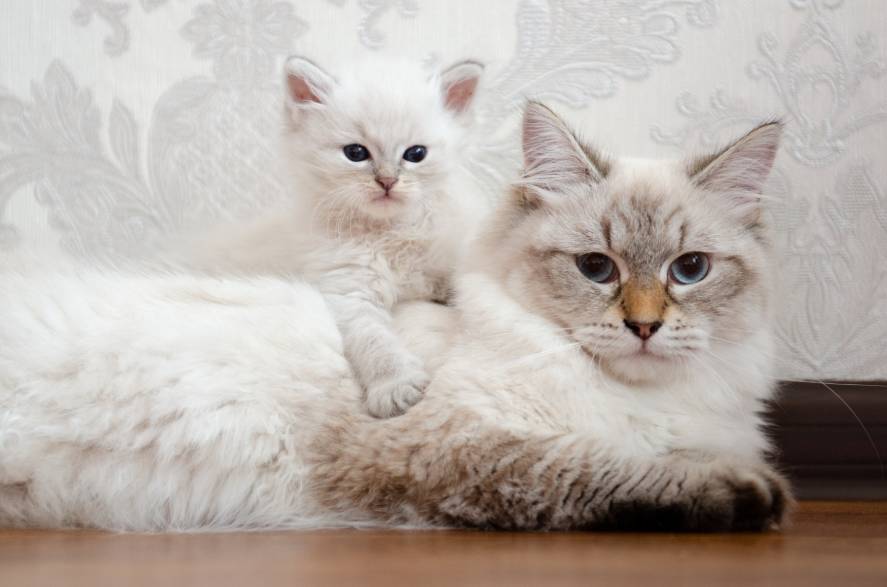Click Below to Skip Ahead
The American Mastiff is a large and powerful dog, often weighing as much as, if not more, than their owner. Fortunately, they are known for their calm and mellow nature and are not considered aggressive. However, they can be stubborn and highly independent, which makes training them a challenge, and you will certainly be unable to convince one to do something that they don’t want to.
Breed Overview
Height:
28–36 inches
Weight:
140–200 pounds
Lifespan:
10–12 years
Colors:
Fawn, apricot, brindle
Suitable for:
Families with experience in training and socializing large breeds
Temperament:
Loyal, loving, calm, protective
Although they’re a true Mastiff, the American Mastiff drools less than most similar breeds, but you should still expect a certain amount of natural drool formation.
The American Mastiff can make an excellent family pet that will get along with virtually everybody in or around the home. Taking on a dog of this size is no small undertaking, though, and you must be sure you know what you are getting yourself into. You will have to feed them a large amount of food, and the breed is prone to certain health problems while also having a relatively short lifespan, averaging 10 to 12 years. Furthermore, as gentle as this pup may be, an American Mastiff can still weigh as much as 200 pounds, so even an accidental bump can do damage.
Let’s get into all the details surrounding this gentle giant!
American Mastiff Characteristics

American Mastiff Puppies
The American Mastiff is a large breed. While they aren’t one of the most popular breeds, the parent dogs and puppies eat a lot and take up a lot of room, which in turn, means they cost the breeder a lot of money before they are sold.
Ensure that you use a reputable breeder. Check with other owners of the same breed, take a look at the kennel club, and speak to local vets and other animal services. Although the size of the breed means that there aren’t too many American Mastiffs in circulation, you shouldn’t have to travel too far across the country to find a breeder.
When you do find a breeder, ask plenty of questions. A good breeder will have no issue answering your questions, and they will want to ensure that you’re prepared to take on a dog of this size because they won’t want to have to take the dog back later. Ask to meet one or both parents. It is usually the mother that is available. Meeting her can give you an indication of how big the puppy will get and the kind of temperament and traits that the mother might pass on to her puppies.
When speaking to the breeder, ask for proof of the necessary health screening tests and other tests. Mastiffs are especially prone to joint dysplasia, and having the parents screened can help prevent this condition from being passed from one generation to the next.
The size of the breed means that some owners are unable to cope with these dogs when they mature, which means you might find them in local shelters. Adopting a dog from a rescue costs less than buying one, though the cost does vary according to the shelter you go to.
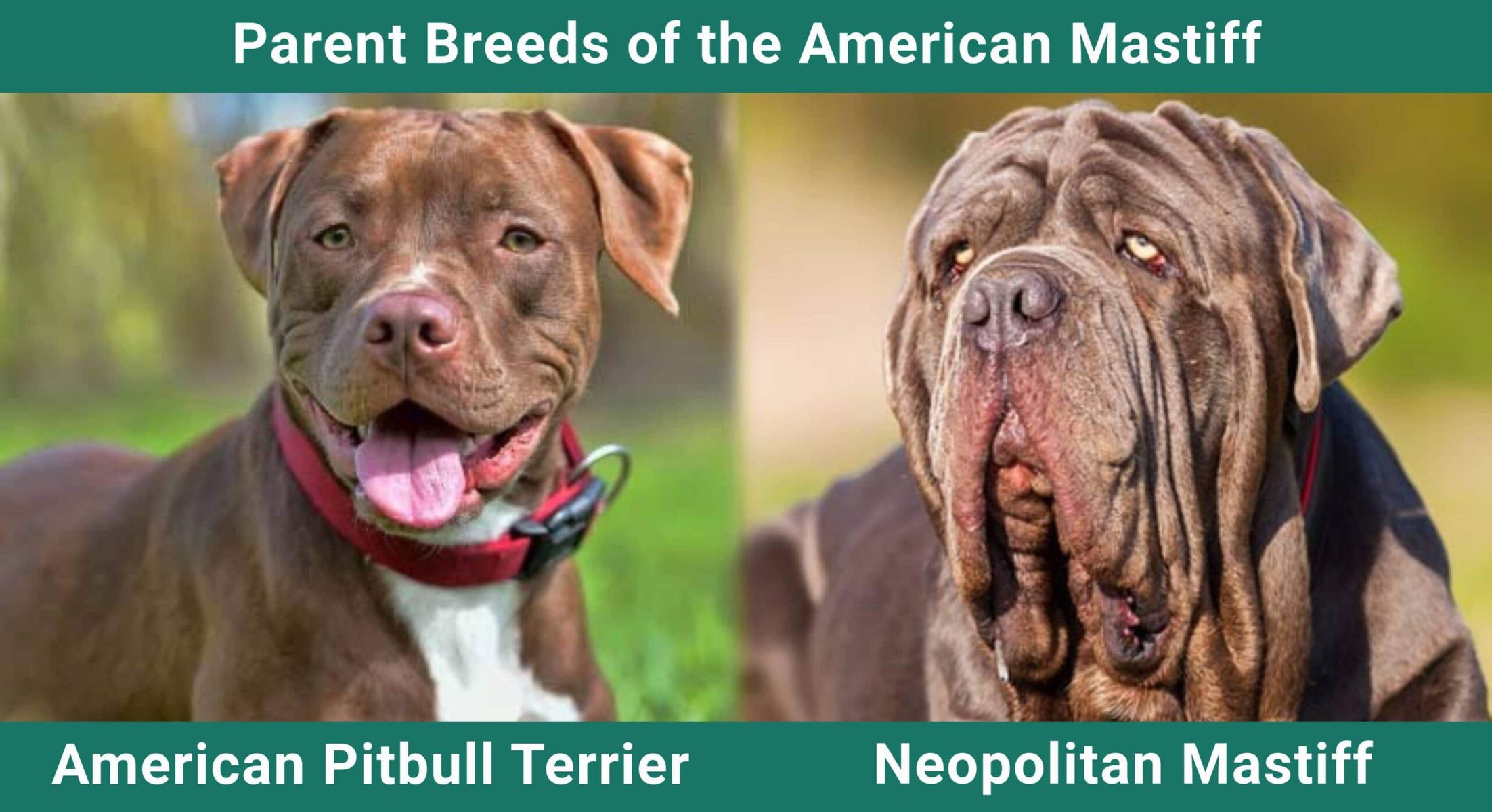

Temperament & Intelligence of the American Mastiff Dog
The American Mastiff is something of a gentle giant. They are not aggressive, despite having been bred to act as livestock guardians and for hunting large game. They do not require much exercise but they do need a lot of space.
They may not be overly friendly with strangers, and it can pay dividends to offer early socialization to this breed because that will ensure that the Mastiff is at least confident and comfortable when in the company of people they have never met before. Training can be a challenge due to this animal’s independent nature. Combined with their sheer size, this means the American Mastiff may not be considered the most ideal breed for first-time and novice owners.
Are These Dogs Good for Families? 👪
A friendly, loyal, and loving pup, the American Mastiff will form a close bond with all of their family. They do not usually favor one particular person over the rest of the family, and they will get along with people of all ages.
Their size means you must be careful when allowing unsupervised time with children because as gentle and understanding as the Mastiff is, they’re a huge dog that can accidentally cause serious injury to small or frail family members. Although this dog is not known for being outwardly aggressive, they’re a protective animal and will not hesitate to take action if they feel that the family needs defending.
Does This Breed Get Along With Other Pets? 🐶 😽
The breed can live with other dogs and may live with cats. You have to consider the size of the animal and any other inhabitants of the house, but the Mastiff does not usually have much of a prey drive, so they will not attack other dogs or cats. For the best results, though, you should always try to introduce a new dog to existing pets when they are all as young as possible. This gives them time to accept one another before they mature.

Things to Know When Owning an American Mastiff
The American Mastiff is a large, loyal, and loving dog. They require minimal grooming and don’t need much exercise. Their size means this breed does better living in a large property with a yard, rather than an apartment. Overall, you shouldn’t underestimate the impact that a 200-pound dog can have on your life.
Food & Diet Requirements 🦴
As you can imagine, this giant Mastiff does have a giant appetite, but this does not mean you should let yours eat as much as they want. You should find food that has been made especially for large breeds. These have high levels of protein, moderate amounts of fat, and low-calorie levels.
The Mastiff can be prone to becoming overweight, so you must monitor what you offer and stick to appropriate guidelines. You will usually find that you need to serve a minimum of 5 cups per day of good quality kibble. You may choose to offer wet food. If you combine dry and wet, ensure that you restrict the amount of each that you give. Basically, if you feed half and half, give half the daily dry allowance and half the recommended wet allowance.
You can also try a raw food diet. It takes more preparation, but it gives you better control of exactly what your dog eats and the level of protein and other nutrients that they receive. You’ll need to make a proper meal plan with a vet, though, to ensure that your pup won’t be deprived of vital nutrients. If you offer treats or use these as training tools, take them off your dog’s daily allowance.
Try to serve at least two meals a day. This can prevent your dog from getting bloat and other related digestive complaints.
Exercise 🐕
Although the American Mastiff does not require a huge amount of exercise, they still have moderate daily needs. Take your giant out once a day for around half an hour, and this should be ample exercise. You should not expect your Mastiff to run or walk excessively long distances, as this is one breed that will become tired quickly. Too much exercise can even cause physical injuries, like joint dysplasia.
Training 🎾
Although they’re not considered the smartest dogs, the Mastiff is intelligent enough to learn basic training. That doesn’t mean they can be bothered to do so, of course. The breed is known for being stubborn, and if they don’t want to learn something, they simply won’t. Keep training sessions short, try to make them fun, and don’t expect too much from this breed.
Although there are exceptions, this dog does not usually perform well at agility or canine sports, though they can do well at weight-pulling and strength sports.
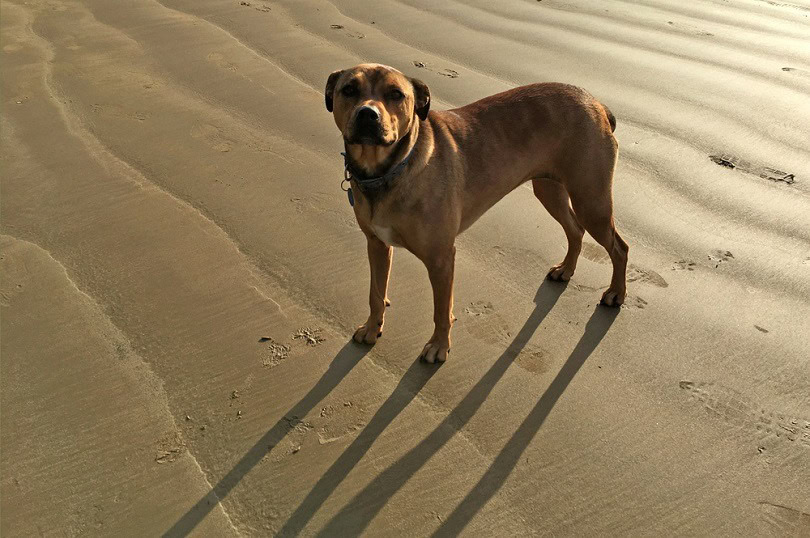
Grooming ✂️
Although the Mastiff is a moderate shedder, they only have a short coat, and this makes it easy to groom. Brush weekly to remove dead hairs and prevent as much fur from making its way onto the floor and the sofa. Fortunately, the Mastiff will usually appreciate the attention, and it presents a good opportunity for you both to bond.
Check their ears regularly. Look for signs of wax buildup or a smell that might indicate there is some kind of infection, and use a damp cloth to clean out any excess mess.
Cut your giant’s nails every 1 to 2 months, as required, and try to get them used to having their teeth brushed daily or every other day by starting when they’re still a puppy. This will make it easier in the long run and help ensure that you can get a toothbrush in their mouth when they’re older.
Health and Conditions 🏥
The breed is considered generally healthy, but their size does mean that they’re prone to musculoskeletal and respiratory problems. Hip dysplasia, the most common complaint in dogs of this size, occurs when the thigh doesn’t fit precisely into the hip joint.
You may never know that your dog has this condition, but some dogs will experience considerable pain and show signs of lameness as a result. Although the parents should have been screened for this health problem, even a successful screening program cannot completely prevent a dog from getting hip dysplasia.
- Hip dysplasia
- Eye problems
- Hyperthyroidism
- Lameness
- Skin problems
Male vs. Female
Females usually weigh between 140 and 180 pounds, and males average between 150 and 200 pounds, so the male is likely to be a little bigger than the female. Other than this, there are anecdotal reports of males being more territorial and females being more protective of family members, but this is by no means guaranteed.


3 Little-Known Facts About the American Mastiff
1. Mastiffs Are Ancient Breeds
Mastiffs are described as being ancient dogs, as it is believed that they originated with Alaunt and Molosser dogs. There are records of these canines being used to chase lions thousands of years ago. Ancient breeds were used for hunting a wide range of animals. They were also used to protect livestock and act as guardians and would have been employed as formidable war dogs.
The American Mastiff is a much more recent addition. They were developed over 20 years ago and first recognized by the Continental Kennel Club in 2000. They’re descended from the English Mastiff, and in most English-speaking countries, the term Mastiff is used to refer to the Old English Mastiff breed, not the American Mastiff.
2. The American Mastiff Is a Giant Breed
Mastiffs of various kinds are among the biggest breeds in the world. The American Mastiff can be as tall as 36 inches and weigh as much as 200 pounds. In 1989, an American Mastiff named Zorba was registered as the largest dog in the world. He was 37 inches tall at the shoulder and weighed a staggering 343 pounds.
Although your Mastiff is unlikely to reach quite this size, they will still be a giant of a dog, and it is no minor undertaking to adopt such a huge animal. A pup of this stature will take over your sofa, your house, and your time.
3. They Reach Maturity Late
The American Mastiff has a life expectancy of around 12 years, which is shorter than a lot of breeds but typical for giant dogs like this. Despite this, the Mastiff will only reach full maturity and stop growing at the age of about 3. Until this time, they’re considered a puppy and then an adolescent.
Most vets and nutritionists agree that a puppy American Mastiff should be given adult dog food because of their size and how much protein they require. Young Mastiffs are susceptible to joint injuries. Light play and general exercise are fine, but jumping over fences or taking part in obstacle courses should be avoided. In fact, most owners do not even let their Mastiffs upstairs because they can struggle to safely navigate their way back down and can get injured in the fall.
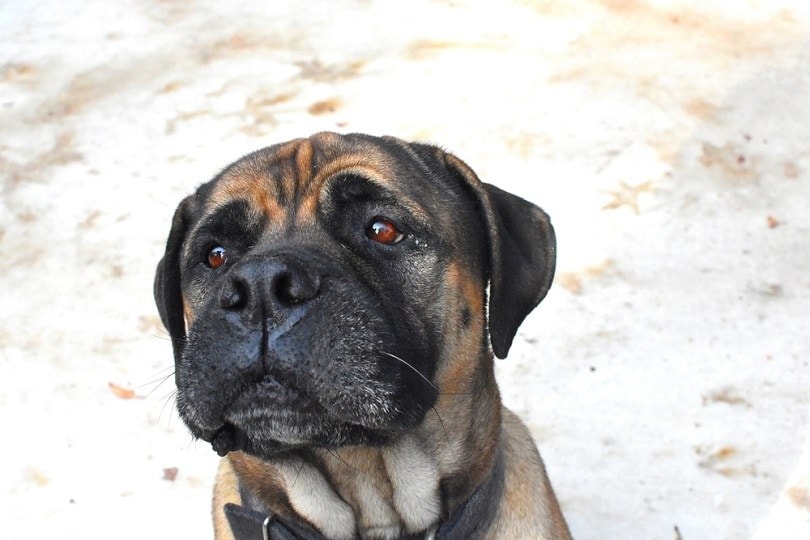

Final Thoughts
The American Mastiff is a giant breed that can weigh as much as 200 pounds and grow to a height of 36 inches. This loyal and loving dog will benefit from a moderate exercise plan, but they should not exercise too much or too hard. A relatively short walk each day should be enough.
The breed will get along well with their family and can be quite protective. While reasonably intelligent and capable of learning basic training, they are known for being independent, stubborn, and sometimes a bit lazy, so they can be difficult to train. For this reason, the Mastiff is considered a better breed for experienced owners, rather than novice and first-time dog handlers.
Your Mastiff will eat a lot, and you will need to ensure that they do not eat more than a reasonable daily amount, though even this will usually mean 5 cups of kibble a day. We recommend consulting with a veterinarian as to what food and how much food per meal for the best results. Look for signs of musculoskeletal illnesses and conditions like joint dysplasia and respiratory problems because these are the most common conditions in this breed.
Related Reads:
Featured Image Credit: Peakpx
